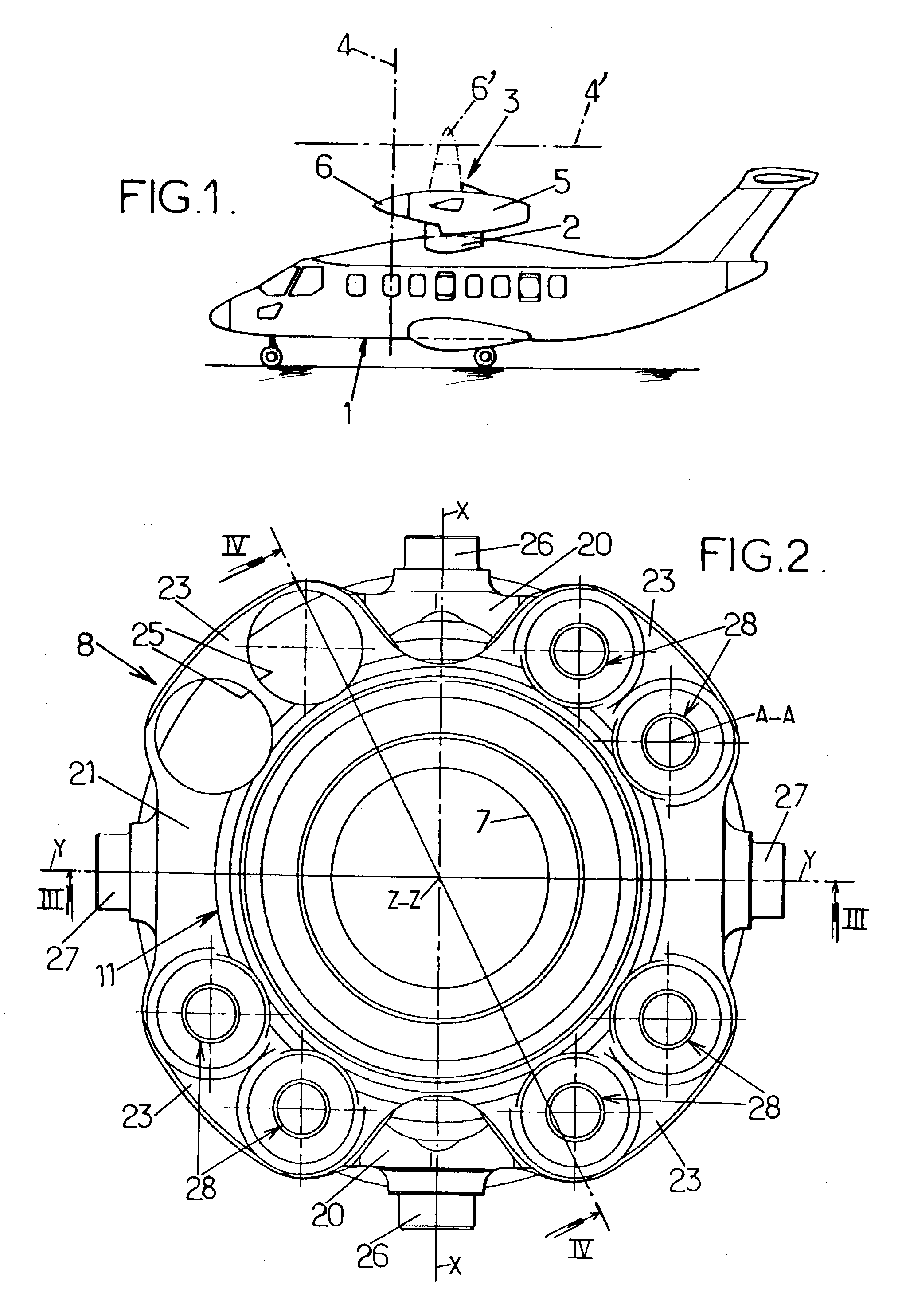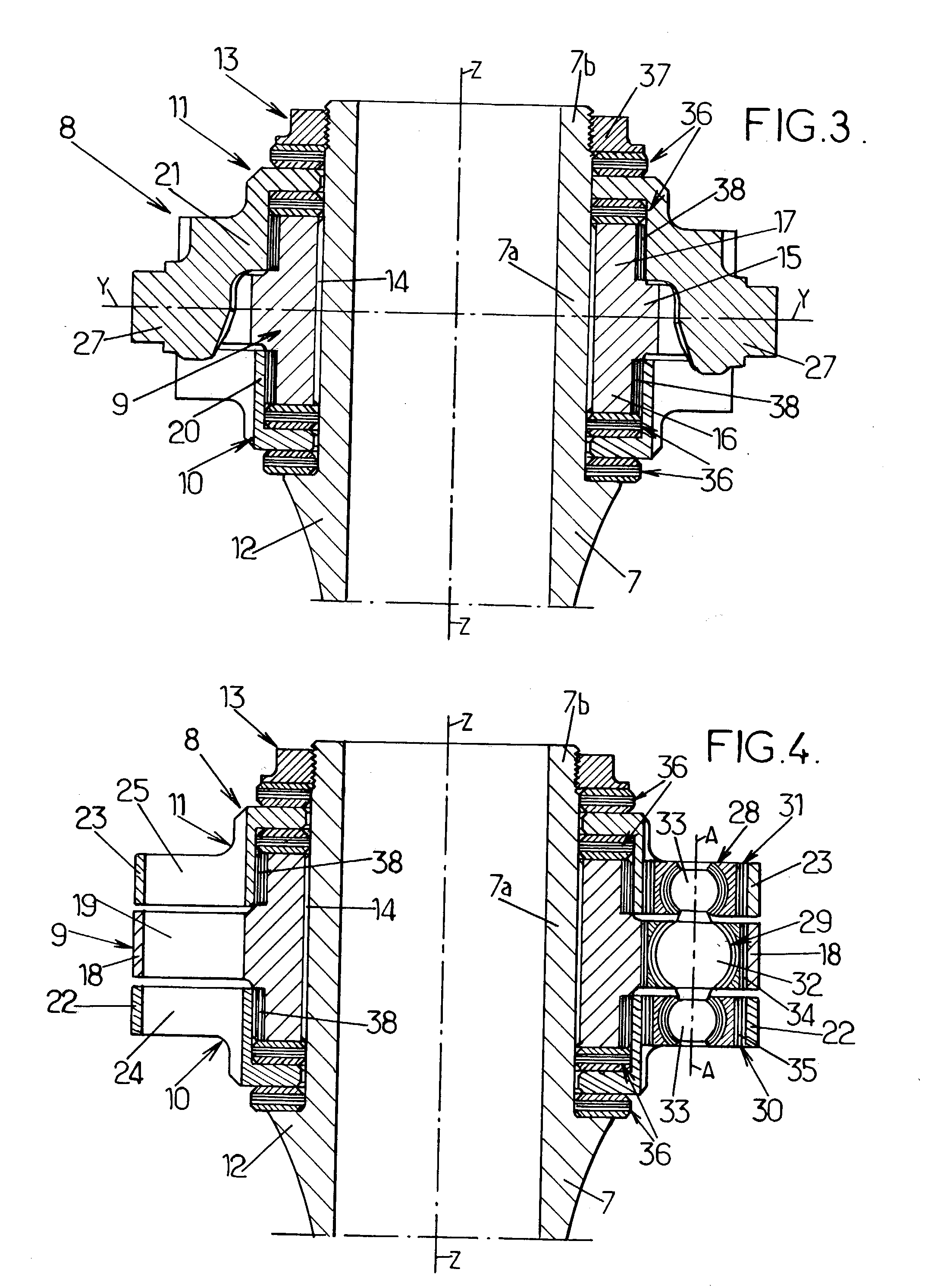Constant velocity drive rotary-wing aircraft rotor with torque splitting differential
a constant velocity drive and rotor technology, applied in the direction of propellers, propulsive elements, water-acting propulsive elements, etc., can solve the problems of reducing the overall performance of the helicopter, accelerating and decelerating blades, and affecting the life of the rotor components
- Summary
- Abstract
- Description
- Claims
- Application Information
AI Technical Summary
Benefits of technology
Problems solved by technology
Method used
Image
Examples
Embodiment Construction
[0060] FIGS. 2 to 6 show a differential torque splitting mechanism, fitted to a rotor mast, for driving in rotation the hub of a convertible aircraft tilting rotor, as described above with reference to FIG. 1.
[0061] In a first embodiment, this differential mechanism may be associated with a two-gimbal device, as shown in FIGS. 7 and 8, for driving in rotation and tilting a rotor hub, which may be such as shown in FIGS. 9 and 10, on which, according to a second embodiment, the differential mechanism drives the hub in rotation via drive links, the tilting means comprising half of a flapping thrust bearing as shown in FIG. 10.
[0062] In FIGS. 2 to 6, the mast 7 of the rotor, driven by its base (not shown) in rotation about its longitudinal axis Z-Z, supports, at its free end portion (at the opposite end to the base) a differential mechanism, designated as a whole by the number 8. This mechanism 8, which belongs to the means for constant velocity drive of the rotor hub, mainly comprises ...
PUM
 Login to View More
Login to View More Abstract
Description
Claims
Application Information
 Login to View More
Login to View More - R&D
- Intellectual Property
- Life Sciences
- Materials
- Tech Scout
- Unparalleled Data Quality
- Higher Quality Content
- 60% Fewer Hallucinations
Browse by: Latest US Patents, China's latest patents, Technical Efficacy Thesaurus, Application Domain, Technology Topic, Popular Technical Reports.
© 2025 PatSnap. All rights reserved.Legal|Privacy policy|Modern Slavery Act Transparency Statement|Sitemap|About US| Contact US: help@patsnap.com



